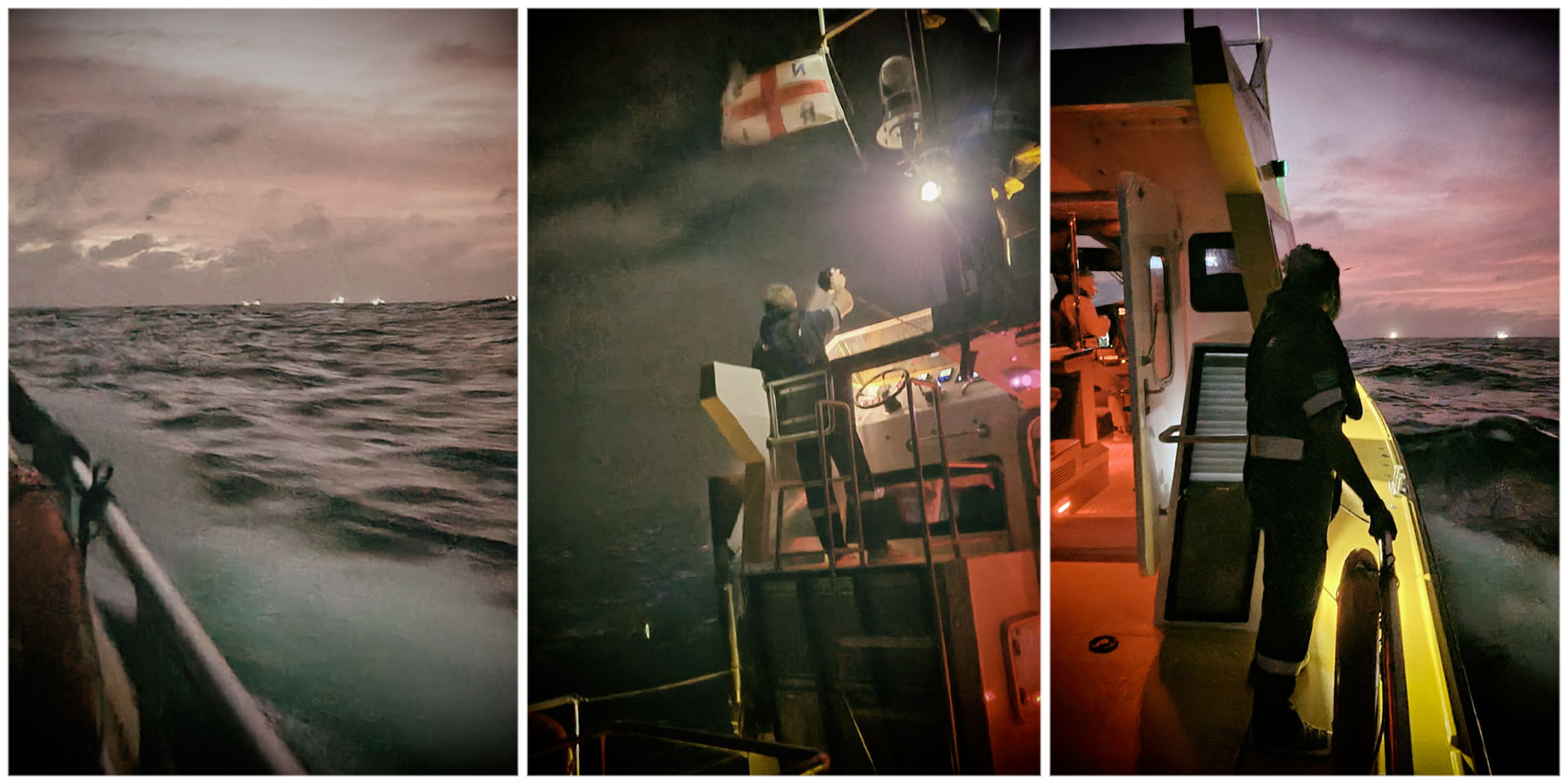The MFV Lepanto sank so quickly that for the majority aboard, survival was impossible.
“The crew stated that the vessel capsized and sank within [a] very short period of time, such that only those who were working on deck survived, save for the Second Engineer and the Greaser,” reads a portion of the South African Maritime Safety Authority (Samsa) preliminary report into the incident, released by Transport Minister Barbara Creecy on Tuesday, 17 December.
“Given that the Skipper was on the bridge at the time, was neither able to issue a distress call nor able to escape from the bridge, it seems likely that the Vessel sank in less than 5 minutes,” another portion reads.
It now lies some 350m down on the seafloor.
The report is the latest update to the events of 17 May 2024 when the Lepanto, a fishing trawler operated by Sea Harvest, capsized 34 nautical miles west of Slangkop Lighthouse, near the town of Kommetjie not far from Cape Town. Of the 20 souls on board, 11 are missing and presumed dead, their families left grappling with anguish and no clear answers.
Read more: Eleven fishermen still missing after trawler sinks off Cape Town coast
The report sheds light on the chaos of that day – and raises troubling questions about the state of maritime safety in South Africa. Despite passing a Samsa dry dock inspection just days earlier, the vessel was undone by a combination of structural risks and operational failures.
According to the report’s summary of evidence from witnesses, “It was confirmed by the survivors that the accommodation doors on the port and starboard side were left open at the time of the incident. These doors are required to be kept closed at all times whilst the vessel is at sea.”
Survivors described how the ship, after hauling a large catch, listed sharply to starboard. The second engineer admitted to transferring fuel between tanks to correct the tilt – a move the report flagged as a potential violation of the vessel’s “Special Stability Requirements” as elucidated in the vessel’s Stability Book instructions.
“It was stated that the catch that was hauled before capsizing was considered to be a big catch which reportedly filled up the stocker pond on the starboard side and spilled some onto the factory deck. Additionally, it was stated that there were bins filled with fish from the previous haul and placed on the starboard side, which was still to be processed,” reads the report.
“All crew stated that the vessel increased her speed rapidly right after the nets were secured and soon thereafter the vessel started to capsize,” it continues.
Risk assessment
Sea Harvest management told investigators that the company’s hazard identification and risk assessment for the vessel identified a risk that the “presence of large fish on deck could lead to the vessel capsizing and loss of life… Control measures identified for this risk included standard operating procedures, special stability instructions to follow, a competent skipper as well as safety drills.”
The report outlines further concerns: blocked freeing ports prevented water from draining off the deck; modifications to the vessel including replacing wooden decking with concrete decking were not reflected in stability calculations; and there were gaps in crew training on basic life-saving equipment.
During interviews, one survivor stated “that he did not know that there was a rescue quoit in the life raft, had he known this he could have thrown the quoit to the crew member who could not swim. He only learnt about the quoit when he recently attended the Proficiency in Survival Techniques course after the incident.”
A rescue quoit is a soft throwable buoyant ring attached to a particular length of floating line.
The report highlights what they call “possible contributory factors”. These include:
- Modifications to the vessel over time which may or may not have been approved;
- The non-compliance with the Special Stability Instructions, in particular, for the vessel in different load/catch conditions and in respect of the transfer of fuel between tanks;
- The transfer of fuel between starboard and port tanks to correct a starboard list on the vessel, especially when taking the catch out of the water;
- The possible transfer of fuel in the wrong direction, ie from port to starboard, thereby aggravating the starboard list referred to above and the stability of the vessel;
- Watertight doors left open on the starboard side main deck and on the port side forward of the accommodation.
In its conclusion, the report says “Given the fact that there is no physical evidence, and the vessel is lying in approx. 350 metres depth, no root cause can be determined for the capsize and sinking of the Vessel.”
In a statement, Minister of Transport Barbara Creecy said, “My hope is that in releasing this report, we assist the families in a limited way in understanding what happened to their loved ones.”
Creecy has instructed the transport department to begin a process of establishing a Marine Court of Inquiry to further pursue an investigation and bring the report to finality. The commissioning of the report was welcomed by the Congress of South African Trade Unions (Cosatu).
“The deceased were breadwinners. Though grief-stricken, the families have not had the opportunity to properly mourn because the bodies of their kin have not been recovered. The fishermen were declared dead by an order of the Western Cape High Court at the end of September. Cosatu hopes that the findings of the inquiry will help them gain some closure and assist with the grieving process.” DM





